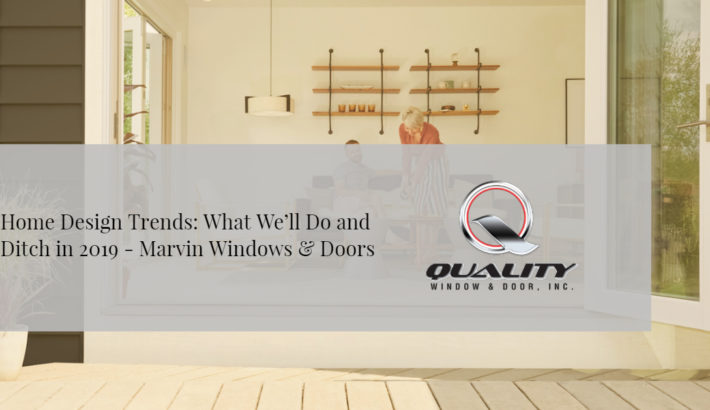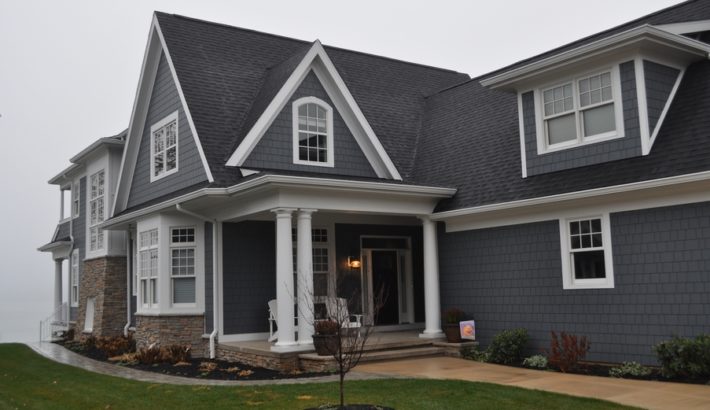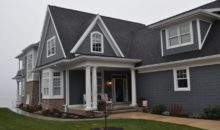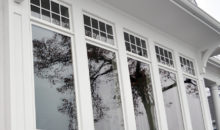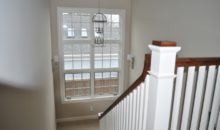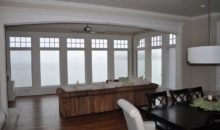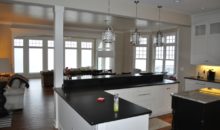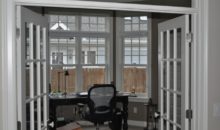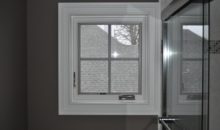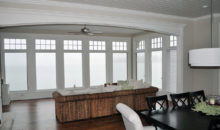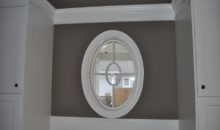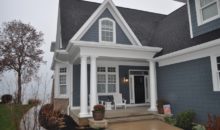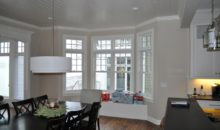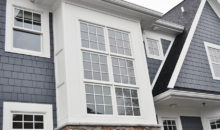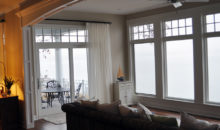We review the home design trends that are tired, tried-and-true or making their debut in the new year.
Last year, we took a look back at the trends that inspired us and looked forward to those that had us excited to greet 2018 with open arms. It seems our crystal ball was as polished as our windows are, as we saw many of those trends play out in a big way in 2018.
As the snow falls (here in Minnesota at least) and the year comes to a close, we put on our design binoculars to gaze into the year to come, reviewing the trends that might be feeling a little tired, the tried-and-true trends that are here to stay and new design movements underfoot that will bring a unique flavor to the new year.
Encore, Please: Bold Black is Here to Stay
Embodied in the mixed finishes and dark interior window frames we saw gaining momentum last year, bold black accents took on a whole new life in 2018. With matte black on everything from kitchen appliances to cars to bathroom fixtures, the time was right for the extension of black interior finish options beyond our Marvin line, including our Integrity All Ultrex and Wood-Ultrex lines. It’s only a matter of time before black shows up on walls, tiles and floors too, so in 2019 we’ll be on the lookout for monochromatic black palettes that take the dark side to a new level.
“People want spaces that are filled with light.”- Christine Marvin – Director, Corporate Strategy + Design
The Marvin Companies Clean Lines and Big Glass Will Endure
In 2018, we also predicted that the new year would bring narrower frames, bigger glass, contrasting colors and simple hardware that transform traditional-looking windows into architectural statements. We wholeheartedly believe this trend is here for the long haul, and we’re doubling down on our commitment to modern design with the recently introduced Marvin Modern product line. “Today’s lifestyles are about removing encumbrances and opting for simplicity. People want spaces that are filled with light, take the eye beyond the boundaries of home and into the outdoors,” says Christine Marvin, our director of corporate strategy + design.
Move over Hygge, New Nordic is Here
Though we don’t think hygge is making its final curtain call, in 2019, lovers of the cozy Scandinavian trend are gravitating towards bolder choices and earthy materials that evoke warmth and charm in a whole new way. Neutrals are making way for louder, unexpected prints while simple accessories will morph into more eye-catching, sculptural decor. Think less worn wood and sheepskin throws, and more bulky stone accents and abstract geometric shapes.
“Wouldn’t it be nice to have a personal sanctuary in which to switch off?”- Niki Brantmark, for Elle Decor
A Return to Tech-Free Zones
On the heels of the personalization trend taking hold in home design, house and apartment dwellers alike are increasingly requesting or creating areas in the home designed to be a respite and sanctuary from tech overload. “In a time when we’re feeling constantly connected through technology and social media, wouldn’t it be nice to have a personal sanctuary in which to switch off?” says Niki Brantmark, founder of My Scandinavian Home. “Creating a highly-personalized space that is warm and welcoming, without the distractions of phones, televisions, or computers is important in counteracting busy day-to-day life and focusing on the heart of design.”
Cozy Nooks that Connect to the Outdoors
A designer might use the technical term “biophilia” to talk about our innate desire to connect with and look at natural forms and elements while indoors, in 2019, we might see a lot of this trend without knowing exactly what to call it. With more than 90 percent of our time spent indoors, areas designed as an escape to nature, a place to connect with light and views to rest and recharge will become more commonplace in the new year as we seek to better support our physical, social and emotional wellbeing in our homes. In 2018, we noted the increasing importance of the art and science of light in the way a space feels, and we’ll only see the focus on light and health amplify over time.
Design with an Eye Towards Longevity
In past years, several trends have included sustainable elements or reclaimed and heirloom items as a cornerstone of popular design. In 2019, as styles become more eclectic (mid-century modern meets Italian mid-century, and Scandinavian minimalism meets art deco maximalism), a renewed focus on quality and timelessness will prevail. Homeowners might be more willing to invest in a piece that will be in their family for years to come, and craftsmanship will be as important as ever as people carefully curate pieces that have personal meaning to them. As Domino Magazine puts it, “The idea of investing in key, standout pieces that will last the test of time, be it decoratively or simply for quality, is an approach we can definitely get behind.”
Primary Color Palettes and a Nod to Bold Yellow
We’ve written about Gen-Z Yellow, the bright hue that’s displacing Millennial Pink on Instagram and in real life, and it’s been predicted that yellow, orange and red may be the color darlings of the new year. In bold contrast to the muted tones and white walls prevalent in years past, 2019 could bring a return to a bright and basic primary color palette. (Seems our delivery trucks will be right at home with the trendsetting elements the year will bring.)
As we bid adieu to 2018, we are invigorated by the possibilities that lie ahead. Even if it might mean saying goodbye to some trends that were near and dear, or embracing a new version of a beloved classic, we’re ready to see where a new design year takes us.

